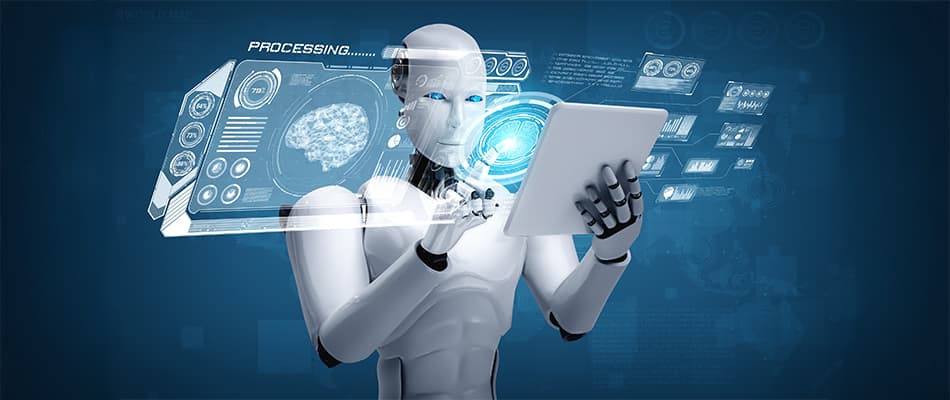What is Machine Learning? Understand its Basics and Applications
Machine learning is a part of artificial intelligence in which computers learn from data to improve over time. Instead of being manually programmed for each task, they use data to recognise patterns, make predictions, or automate tasks. For example, it helps recommend products, spot fraud, or even drive cars. By processing large amounts of information, machine learning helps different fields like healthcare, finance, and retail work more efficiently. As technology grows, its role becomes even more essential in making everyday tasks smarter.
In this article, we will explore what is machine learning, its components, lifecycle, tools, and its impact across different industries.
What is Machine Learning?
To understand what is machine learning, one should go through its basics. Machine Learning is a form of artificial intelligence that helps computers learn from data and get better at tasks over time, without needing step-by-step instructions. It works by studying lots of data to find patterns, which the system can then use to make predictions or decisions. For example, it can sort pictures, group documents, or predict future trends in financial information.
In banking, machine learning can spot possible fraud by recognising patterns in past transactions. The system learns to understand what makes a transaction look suspicious or normal, helping banks catch potential problems faster and more accurately. This technology is used across various fields to automate tasks and improve decision-making processes.
What is a Machine Learning Lifecycle?
When exploring what is machine learning, understanding the lifecycle is equally important. A machine learning lifecycle is a step-by-step process used to create and improve a machine learning model. It starts with gathering raw data, then moves on to training the model using that data. Each stage in the lifecycle helps make the model more accurate, so it can predict and make decisions better. The lifecycle also includes testing and fine-tuning the model to ensure it works well and maintains good performance over time.
Listed below are the stages in the machine learning lifecycle:
- Data Collection – This step involves gathering data from various sources to train and test the model. The collected data needs to be accurate and cover a wide range to ensure the model can make good predictions.
- Data Preparation – The collected data is cleaned and organised by fixing any errors and putting it into a format that’s ready for analysis. This step ensures the data is suitable for training the model.
- Model Building – In this step, an algorithm is chosen to train the model using the prepared data. Different algorithms may be tried to find the one that works best for the task.
- Model Evaluation – In this step, model is tested with separate data to check its accuracy and performance. This step helps confirm if the model is ready for real use.
- Deployment – In this step, the trained model is put into a real-world setting where it can make predictions and provide useful insights.
- Monitoring & Maintenance – After deployment, the model’s performance is regularly checked and updated to keep it accurate, especially when new data is available.
Key Components of Machine Learning
Explaining what is machine learning involves breaking down its key components, including data, models, algorithms, and evaluation methods. Each component plays a role in teaching the machine to understand and make sense of information.
Here are the key components explained simply:
- Data – Data is the key element for training models. It can be in different formats like text, images, or videos, and needs to be good quality and relevant for the model to learn correctly.
- Models – The model uses data to find patterns or make predictions. Think of it as a system that learns from examples to improve its accuracy over time.
- Algorithms – Algorithms are like step-by-step instructions that guide the model on how to learn from the data. They help the model get better at making predictions by adjusting its parameters.
- Evaluation – Evaluation checks how well the model is doing by measuring its accuracy. It involves testing the model’s predictions to see if they match the actual results.
Tools and Technologies in Machine Learning
To understand what is machine learning at a deeper level, knowing the tools and technologies that drive its development is important. These tools help data scientists and developers handle data, improve models, and automate tasks. Knowing about these tools can help you get better results when working on machine learning projects.
Here are some common tools used in machine learning:
- TensorFlow – Created by Google, TensorFlow is an open-source library used for tasks like deep learning. It’s popular for both research projects and large-scale applications.
- PyTorch – Known for its flexible design, PyTorch is great for developing models, especially in fields like natural language processing and computer vision.
- Microsoft Azure – This cloud-based platform allows you to create, train, and deploy models easily. It has user-friendly tools for managing the entire process.
- Google Vertix AI – This platform combines tools for building, deploying, and managing models. Its AutoML feature makes creating high-quality models simpler.
- Weka – A data mining software that comes with various machine learning algorithms. It provides an easy-to-use interface for tasks like classification and clustering.
Why is Machine Learning Important?
Now that you have learnt what is machine learning, let us look at its importance too. It is important because it helps computers learn from data and make smart decisions automatically. With so much information available, machine learning can find patterns quickly and make predictions, saving time and effort. It is used in everyday things like showing product recommendations, spotting security problems, and even helping cars drive themselves.
As the internet and computers become faster and more powerful, machine learning is being used more often to make life easier. It helps businesses save money, reduce risks, and improve services, making things work better and smarter for everyone.
Application of Machine Learning in Various Industries
Machine learning is making many industries work smarter and more effectively. To understand what is machine learning, it’s important to see how it helps with predicting trends, automating routine tasks, and improving decision-making. By analysing large amounts of data, machine learning finds useful patterns that help organisations become more productive and reduce costs.
Here are some key industries where it plays an important role:
-
Healthcare
Machine learning is changing healthcare by making it easier to diagnose and treat patients. It helps doctors predict health risks by studying patient records and spotting high-risk cases. It also assists in reading medical images like X-rays and MRIs, making it easier to find issues such as tumours. Chatbots and digital tools improve patient services by making appointment scheduling and information access more convenient.
-
Finance (FinTech)
In finance, machine learning is used for spotting unusual transactions to prevent fraud, managing risks, and providing personalised services. Robo-advisors, for example, use it to give tailored investment advice. In trading, machine learning analyses market data to predict trends, helping investors make better decisions.
-
Retail & E-Commerce
Machine learning boosts retail by understanding customer preferences and offering personalised product suggestions like Amazon’s ‘You might also like’ feature. It also helps stores manage stock by predicting what items will sell quickly, ensuring products are available when needed.
-
Manufacturing & Supply Chain
In manufacturing, machine learning improves efficiency by predicting when machines need maintenance and preventing breakdowns. It also helps in inventory management by analysing supply chain data to forecast what products will be in demand, ensuring items are available without overstocking.
How to Get Started With Machine Learning?
To understand what is machine learning, students can begin by exploring the basics of artificial intelligence through an AI course. This course will introduce them to core concepts like data science, algorithms, and programming. Developing these foundational skills and hands-on practice is important for mastering machine learning. Additionally, students will learn to apply machine learning models and stay updated with industry trends, preparing them for real-world challenges in the field.
Here are some simple steps to get you started:
- Learn Essential Skills – Start by learning programming languages such as Python or R, along with statistics and data handling skills. Understanding algorithms and how they process data is also important. Online courses and tutorials can be great ways to build a strong foundation in these areas.
- Enrol in Certification Courses – The Artificial Intelligence Course by Digital Regenesys includes a detailed study of machine learning as part of its curriculum. This course provides essential AI concepts, tools, and techniques, making it suitable for learners interested in machine learning. It offers a flexible 37-week schedule designed to develop practical skills and industry-relevant knowledge, helping learners gain a strong foundation in AI and machine learning.
- Networking – Engage with professionals in the field by attending workshops, webinars, or conferences focused on AI and machine learning. Networking can help you gain valuable insights, stay updated with the latest industry trends, and expand your professional connections.
- Practice Real-World Problems – Apply your knowledge by working on small projects or participating in online competitions such as Kaggle. Solving real-world problems will help you understand the practical aspects of machine learning and improve your skills.
- Apply for roles in AI and Machine Learning – Once you have gained sufficient knowledge and hands-on experience, explore job opportunities in AI, data science, or machine learning roles across different industries.
Conclusion
Machine learning is changing how businesses work by offering smarter ways to make decisions, automate tasks, and analyse data. Understanding what is machine learning, including its stages and real-world uses, can help people and companies stay ahead in the fast-changing tech world. By learning the basics and key tools, one can use machine learning to improve processes, reduce risks, and bring new ideas to life.
If you’re interested in gaining practical skills in AI and machine learning, you can enhance your expertise by joining the top courses by Digital Regenesys.
FAQs on What is Machine Learning
What is Machine Learning?
Machine Learning Definition tells us that it is a type of artificial intelligence that allows computers to learn from data and improve at tasks without being explicitly programmed.
What are the key components of machine learning?
The key components include data, models, algorithms, and evaluation methods. These elements work together to create predictive models.
Why is machine learning important?
It automates tasks, predicts trends, and enhances decision-making in fields such as healthcare, finance, and retail, making business operations more efficient.
How can I start learning machine learning?
Begin with essential skills like programming and data analysis, then take courses in artificial intelligence that include machine learning modules.
How does machine learning improve healthcare?
Machine learning helps in predicting patient risks, making accurate diagnoses, and analysing medical images like X-rays. It also enhances patient services by streamlining tasks such as appointment scheduling and information access.














